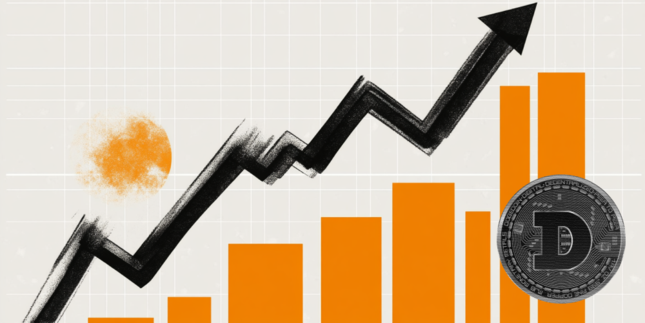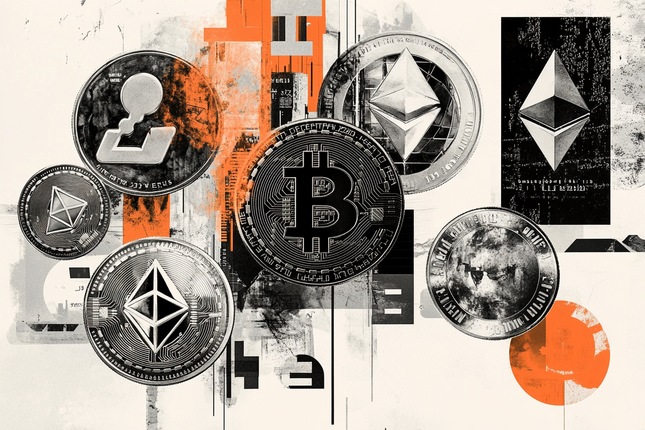RIPPLE NEWS, ANALYSIS AND FORECAST
Latest Ripple News
Ripple Technical overview
Latest Ripple Analysis
Editors' picks

Dogecoin sustains bullish outlook, but surge in supply in profit poses risks
Dogecoin edges higher on Friday, backed by increase in speculative demand. DOGE’s Open Interest hits $3.4 billion, while volume increases to $6.5 billion. Dogecoin’s supply in profit rises, adding to the risk of profit taking.

Pi Network flashes bullish potential ignoring the community concerns
PI price action forms an Adam and Eve pattern setup, signaling a potential bullish reversal. Pi Network invests in OpenMind, an AI robotics startup that has raised $20 million in funding.

Crypto Today: Bitcoin uptrend takes a breather as Ethereum, XRP bulls tighten grip
Bitcoin price approaches $118,000 round-figure resistance but then retraces amid steady spot ETF inflows. Ethereum surges 16% from last week’s support as bulls tighten grip, aiming for highs above $4,000.

Bitcoin Weekly Forecast: BTC bulls target $120,000 as Trump moves to allow crypto in 401(k) plans
Bitcoin price closes above the $116,000 resistance, with bulls setting sights on the $120,000 level. Trump signs an executive order enabling cryptocurrency assets in 401(k) retirement accounts.

Bitcoin: BTC bulls target $120,000 as Trump moves to allow crypto in 401(k) plans
Bitcoin (BTC) looks set to close the week in the green, breaking above the $116,000 resistance, as market optimism swelled after United States President Donald Trump signed an executive order to include alternative assets, including crypto, in US 401(k) retirement accounts.
BTC
ETH
XRP
What is Ripple?
Ripple is a blockchain-based digital payment company founded in 2012 that utilizes the cryptocurrency, XRP, to facilitate fast and low-cost international fiat currency transactions. XRP is the native cryptocurrency of the XRP Ledger, the blockchain that powers Ripple's operations. It's important to note that XRP is a cryptocurrency while Ripple is the parent company behind its operations.
XRP was created with almost the same goal as Bitcoin, which is to facilitate easier payments globally but with a focus on businesses and banking institutions. Unlike Bitcoin – which is mined over time – all XRP tokens were issued at its launch. At the time of writing, over 59 billion XRP tokens are in circulation, with a total supply of 100 billion XRP.
While XRP was originally designed to facilitate B2B international transactions, its price volatility has seen traders leverage it for speculative purposes.
A major turning point in XRP's history is the beginning of Ripple's legal battle with the US Securities & Exchange Commission (SEC). The SEC filed a lawsuit against Ripple and its co-founders Christian Larsen and Bradley Garlinghouse in late 2020, alleging that the sale of XRP was an unregistered security offering. In July 2023, a federal court ruled that XRP is not a security when sold to retail investors, marking a major victory for Ripple.
Furthermore, Ripple created a stablecoin, RLUSD, to improve cross-border payments for its users. RLUSD is designed to maintain a 1:1 price peg with the US Dollar. With this stablecoin, Ripple aims to tackle concerns about XRP's volatility by providing a stable option for users to conduct transactions.
Differences between Ripple, Bitcoin and Ethereum
XRP's main difference from Bitcoin and Ethereum stems from its user focus, consensus process and market dynamics. While all three cryptocurrencies have a lot of similarities in basic features like privacy and transparency, they differ in other key areas.
Satoshi Nakamoto created Bitcoin as a decentralized medium of exchange and store of value for everyday users. Ethereum is designed to power smart contracts that enable the creation of decentralized applications (dApps) that cut across finance (DeFi), supply chain, asset management, gaming (GameFi), governance (DAOs), etc.
XRP, on the other hand, is tailored to serve as a cross-border payment solution for businesses and financial institutions but could also facilitate peer-to-peer transactions.
Another key difference is the process through which Bitcoin and XRP validate transactions. While Bitcoin leverages the energy-intensive Proof-of-Work (PoW) consensus mechanism and Ethereum uses Proof-of-Stake (PoS) to validate transactions, XRP functions via a social governance consensus process that requires network nodes to maintain a trusted list of validators that reaches consensus on the correct state of the ledger/blockchain.
Unlike Bitcoin and Ethereum, validators don't receive rewards in newly minted coins as all XRP tokens were pre-mined during the creation of the cryptocurrency.
XRP's consensus process made it more scalable and cheaper in processing transactions than Bitcoin and Ethereum. XRP can theoretically process 1,000 transactions per second (TPS), with each transaction costing only 0.00001 XRP. Bitcoin and Ethereum can only process roughly 7 and 20-30 TPS, respectively, with transaction fees occasionally crossing $100 during heightened network activity.
Other areas of difference include:
- The XRP Ledger and Ethereum's ability to host tokenized funds like stablecoins and utility tokens while Bitcoin can't.
- XRP's huge supply of 100 billion XRP against Ethereum's average supply of 120 million – maintained by a burn mechanism – and Bitcoin's deflationary design of a 21 million BTC supply cap and a halving mechanism to reduce its emission rate.
- XRP has strong ties to the company Ripple, as demonstrated by its significant underperformance after the SEC sued the latter. Bitcoin and Ethereum, on the other hand, have no strong ties to a single company.